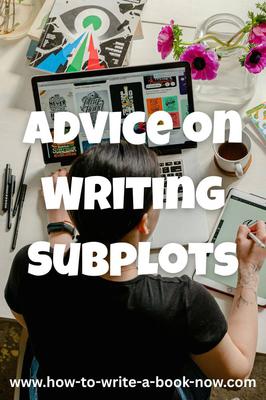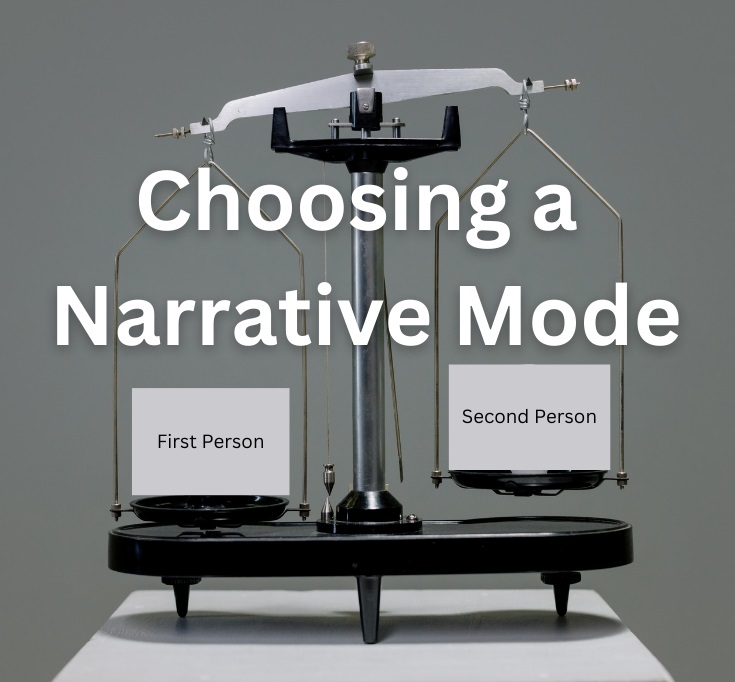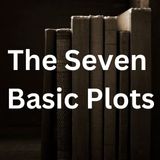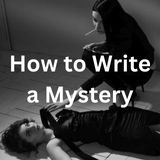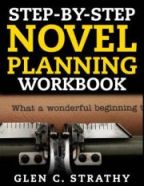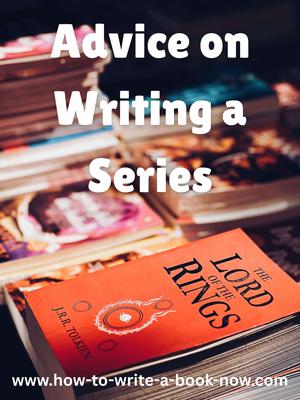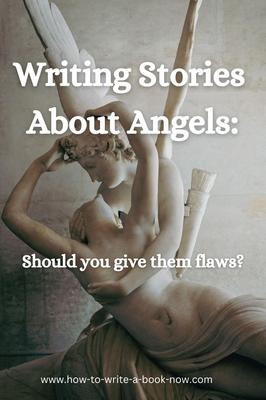How important is it to have a subplot?
by Dana
(Sacramento, California)
Question: How important is it to have a subplot that runs through much of the story? If an otherwise good story lacks one, would most agents or publishers consider that a flaw worthy of rejection?
I've finished my novel, and think I have a good story. One of my beta readers feels it needs a subplot that's stronger and appears more frequently than the minor ones I've created, just because I thought I had to. What do you think? Thank you.
Answer: I think you have to ask yourself what the purpose of such a subplot would be.
The best reason for having a subplot is to explore a thematic issue more fully by showing it from a different perspective or in a different scenario than in the main plot. Shakespeare did this quite often and he has been copied ever since.
Another reason is to illustrate how the story goal is something that concerns or affects everyone in the story world, but in different ways. (For example, in Pride and Prejudice the goal is to find a good marriage, but it's not just the main character, Elizabeth, who wants one. The subplots concerning her sister Jane's romance with Bingley and her sister Lydia's flirtations with soldiers help show that everyone has this goal.)
Other reasons that are less valid include...
* Varying the emotional tone (Shakespeare did this too when he inserted a subplot that concerned lower class people or humour when the main plot was more serious and concerned upper class people).
* To create a sense of authenticity by showing that minor characters have things going on in their lives as well. (This, however, is a pretty weak reason.)
* Exploring the relationship between minor characters (again, this is best used as an opportunity to explore a theme from a different angle).
* Lengthening a work that is too short. This is the worst reason for creating a subplot and probably should never be done.
If you look around, you will find lots of successful novels that don't have subplots.
Honestly, if you have a good story with an engaging plot, rich characters, an interesting voice, and emotional depth... and is novel length ... that should satisfy a publisher. (An interesting subject and a well developed thematic argument are bonuses.)
Unless you're writing for a specific line that has strict rules (and subplots are the rule) I wouldn't worry.
Click here to read or post comments
A Subplot Consisting of Flashbacks?
by Vernon
(California)
I'm in the early stages of writing my novel. It will be fantasy, set in the modern world. To make a very convoluted story short, I decided on having 2 main stories. The first is about the protagonist as a 20 something detective who specializes in crimes committed by magicians. The second is a subplot consisting of flashbacks with the protagonist as a teenager who is under the tutelage of a couple of wizened magicians.
My plan is to have the 2 stories sort of mirror each other (e.g. in the past the protagonist meets someone, falls in love, then breaks up, while in the present they are fighting, break up, then get back together). I've read stories that are similarly constructed, but they have been in comic books, where readers are given visual clues as to whether the story takes place in the past or the present. What devices or techniques can I use to signal to the reader that this part of the novel deals with the character in the past so s/he doesn't get confused?
Answer: You are correct in thinking it's important for the readers to know who and where they are at all times (that is, whose point of view are they experiencing the story from - the younger or the older main character).
Unless the flashbacks are very short, you should only switch timelines at chapter breaks. In addition, you want to signal each switch by including information that orients the reader in the new time/person right away.
Sometimes you can use a simple device like putting the date upfront, either as the chapter title or at the start of the first line, in the manner of a journal entry. For example, "November 3, 1984: it was three days since the break-in..."
This kind of lead also reminds the readers of the previous event in this timeline and lets them know that what follows is a continuation.
Sometimes, you can accomplish the same effect if you leave out the date and just mention the last event in the timeline.
The first time you switch timelines, make sure you include information upfront that lets the reader know they are now in the past. In first person narration, it can be as simple as, "On my fifteenth birthday..."
You can also use a device to trigger a flashback. For instance, the main character might come across objects, places, or people in the present that trigger memories of the past. One chapter might end with a trigger that leads into the next chapter which is the flashback.
Another way to separate the timelines is to use a different style of narration for each one. For instance, you could write the present timeline in present tense and the past timeline in past tense. Or you could write one timeline in 3rd person and the other in first. You could write the past timeline from a different character's point of view. Or you (trickiest of all) you could alter the character's voice. For instance, perhaps the present day character is more jaded while the younger one is naive. This is a little more complicated to pull off and you still may need to put in the orienting information at the start of each chapter where you switch timelines.
Best of luck.
Must a subplot affect the main plot?
by Andy
(Europe)
My question is, "Must a subplot affect the main plot?"
I'm writing on an epic fantasy novel. This novel has four main characters, who also double as both POV characters and protagonists of their respective story arcs. (In fact, with the two major villains, the MC list grows to six, I believe.)
Although each of the four MCs has their own, individual (sub)plots that more or less strongly touch the main plot, there is one of the four MCs, who's the definitive "chief" main character, the absolute primary character: Heck, the book's title is even named after that particular MC. Let's just call him "Alpha", for reasons of clarity.
The other 3 MCs are far less important than Alpha: They take up much less place "in front of the camera" (although they still are very strong and extremely important to the book and have long story arcs, all of which we see in the book).
However, the least important of those 3 "lesser" main characters (let's call him "Zeta") has a very intriguing subplot.
The problem is that, although Zeta's subplot is extremely important for setting up and expressing one of THE main themes of the whole epic, it is, plot-wise, for the most part only tangentially linked to the Alpha's plot, which happens to be also main plot of the book.
In fact, Zeta's subplot and the book's main plot only connect briefly several chapters into the book and longer for the final 4-5 chapters.
Basically, Zeta's subplot is birthed (and feeded) by the main plot; but at no point does Zeta's plot affect the main plot, except briefly in one of the final 4-5 chapters. When the main plot ends, so does Zeta's subplot, since that subplot's engine was the main plot.
That's no problem: It IS a subplot, after all.
But I read everywhere I look for writing advice that a subplot MUST affect a main plot: That is, it should several times touch the main plot, should remain linked to the main plot, etc.
If the story works otherwise, is it *really* necessary to take a subplot that works in itself and is also not only a beautiful story in its own right, but is also a very good expression of one of the chief themes of the tale, and contrive some way how the main lot could be dramatically affected by it? Even though it feels totally wrong to me? Especially since the organic flow of both main and subplot don't suggest a way to do so without it feeling contrived?
To be clear: The main plot *does* affect the subplot: It is almost the subplot's engine, especially as the subplot's resolution is a direct result of the main plot: Zeta's subplot is even more dependent on Alpha's main plot than Aragorn's subplot was dependent on Frodo's main plot. the subplot.
But by the same token, the subplot doesn't really affect the main plot, except at one short episode somewhere in the final 5 chapters. And even that could be changed with a little work.
So I wonder: Should I contrive a way for Zeta's subplot to affect Alpha's main plot directly?
Or would it be better to go with my instincts and not look for some way Zeta's subplot can affect the main plot, since the overall story simply doesn't lend itself for it without heavy re-writing?
And: Generally, would you say that a subplot MUST directly affect the main plot in some way?
Answer: I think you have nothing to worry about.
One of the main uses of subplots is to enrich the thematic argument by providing incidents that offer different perspectives on the values, principles, and approaches embodied by various characters in the story world. By providing evidence for and against these principles and their counterpoints subplots create a richer puzzle for the reader, who must weigh up the evidence and reach a conclusion as to which principles are truly good or advantageous.
Shakespeare did this all the time, and so have many writers since. For example, in King Lear, Lear's blindness regarding which of his daughters was most sincere in her affection is echoed by Gloucester's inability to perceive his illegitimate son as a threat. By offering additional evidence regarding the failure to see one's children accurately, the subplot enriches the thematic argument of the main plot.
What connects a subplot to the main plot may be as simple as having some of the same characters involved in both or (even simpler) having characters from both plots interact at some point. This establishes that they are all part of the same story world -- the "storymind" that is attempting to resolve the conflicting principles in order to obtain wisdom.
Of course, there is a certain delight that the reader experiences each time a subplot affects the main plot. We like seeing how events are connected because our mind likes to fit things into a coherent pattern. It makes us feel like we understand life.
Click here to read or post comments
How to Structure Subplots
by David
(Philly)
Question: Can you tell me how to structure subplots. Is there a specific way to outline them that is effective? I have a few subplots and they have conclusions but I was wondering how can I outline a subplot so that it fits seamlessly into the plot and also is a almost "professionally good plot as the main plot would be set up.
Answer: There are different types of subplot, some more developed than others.
In some stories, a subplot may be so well developed as to be practically a complete story in itself - a co-plot if you like. What connects it to the main plot is that it shares the same world, some characters, and perhaps offers a different take on the same theme. In that case, you would develop the subplot the same way you would develop the main plot, having it converge with the main plot at or near the climax of both.
Other subplots are used to explain why a character in the main plot behaves the way he does. For instance, in the first Star Wars movie (Episode IV) the subplot in which Han Solo is being pursued by the bounty hunter is very briefly introduced in order to justify why he needs money so desperately - so he doesn't come across as too selfish. Backstories are often presented for similar reasons.
Usually these minor plots are just partially developed. Only one throughline out of the four may be told. For instance, the subplot may just show the story of the relationship between two characters, or just the story of how the main character resolved an inner conflict, or just the overall story related to a previous goal.
A third type of subplot is used to explore a relationship between two minor characters in order to bring them to life more.
For instance, let's say you are writing a story about a team of explorers and you have assigned them archetypal roles.
That means you have a loyal and enthusiastic Sidekick - perhaps a plucky young man - and a Skeptic - perhaps an older, experienced man who has grown cynical and risk-averse.
You can develop the relationship between these characters by writing a series of interactions between them throughout the course of the story. Perhaps in their first encounter they disapprove of each other' views. In the second encounter, disapproval can turn to conflict. The climax of the relationship will determine if they become friends or enemies, and the conclusion will show the effect of that outcome. (You don't have to have four interactions, that's just an easy way to explain it.)
Of course, not all relationships are based on conflict. Sometimes a relationship can be about people who inadvertently help or hinder each other. Sometimes it can be about people who act as catalysts for each other, or the opposite of a catalyst. And some relationships may have all of these types of interaction, but on different issues.
At any rate, a subplot should generally be developed in the same way you would develop any dramatic arc. That is, it will develop in four stages...
setup --> complications --> crisis --> resolution
The setup might be how the relationship begins. The complication is how the relationship develops or deepens, whether it's about conflict, cooperation, romance, needing each other, etc. The crisis may be where the relationship is tested, and the resolution will show how the relationship stands in the end.
Click here to read or post comments
Change roles in a subplot
by Mel
(Ohio)
Question: Would it make a character seem shifty if in the overall plot they were the emotion player, but in a subplot they were the voice of reason? Can a character change roles in a subplot?
And that question applies to all the archetypes can a player be different player, more specifically the opposing player from their overall part in a subplot? Guardian becomes Contagonist, Protagonist becomes antagonist and so on.
Answer: A person's identity often depends on the situation. We all play different roles in different contexts. Someone who is an authoritarian boss at work might be an egalitarian at home with his family, or the underdog in his circle of friends.
(There's an interesting study you might google in which researchers changed the rules of the Monopoly game. In their version, there are different rules for different players. These rules are designed to simulate the difference between having a wealthy upbringing versus a poor one. The study showed that, no matter what someone's normal personality is, their behavior will unconsciously change during the game to reflect whether they are in the "rich player" or "poor player" role.)
Sometimes it can be interesting to bring out a different aspect of a character's personality by putting him in a different context where he must play a different role. You don't want to change his personality, just show how that same person behaves under a different set of pressures and expectations. Show a side of him that he cannot perhaps reveal in the usual context.
You will often see this done on TV series. One episode might abandon the usual main character and instead focus on a minor character, creating a plot that revolves around them in order to explore their personality.
To take an obscure example, in the old TV Western series Gunsmoke, the Marshall has a deputy named Festus who is a Sidekick/Emotion character who often argues with the Doctor (a Reason character). The audience is amused at Festus's attempts to get people to buy him drinks and his uneducated way of speaking.
However, in one episode, Festus's relatives show up asking for his help on a quest. It turns out that within his family Festus is the smartest, most capable person. So for that one story, Festus takes on a Reason/Protagonist role--a role he can never play when the Marshall and the Doctor are around.
Similarly, the series Star Trek: the Next Generation has a few episodes in which minor characters like the Doctor or the ship's Psychotherapist take command of the ship or become an undercover agent, so we can see them in a different milieu.
So yes, in a subplot a character may play a different archetypal role than he/she does in the main plot, especially if he is dealing with a different group of other characters.
Click here to read or post comments
Too Many Subplots?
by Josef
I'm worried my novel has too many subplots. In the process of planning, I have created, in addition to the four essential througlines, nine additional subplot througlines. At least four of them are absolutely essential for the development of my story. Whenever I was creating character bios, I used your article on creating believable, 3-D characters to do so.
However, I think I might have been a little too crazy with how much I developed my lesser characters. Two of them could easily be reduced to background characters and their subplots dropped. At the same time, I feel like describing their stories, however briefly, will strengthen my theme as well as add depth to the world. (If you couldn't tell, I'm one of those writers who likes to create characters first and then work out the plot).
So, my question is this: Where should I draw the line on how many subplots I include in my story? Is there a certain number I should stop at?
Thank you in advance for taking the time to respond. I found this site about a month ago, and it has been an enormous help in planning my first novel. I now have a much greater understanding of how story works, all thanks to your invaluable articles. I am extremely grateful.
Answer: Sometimes you only know this after you have written a first draft.
Some people's first drafts are huge and messy, and that can be a good thing. Often it's better not to censor yourself at this stage. Include as many subplots as you like. Explore whatever terrain seems interesting. Your plan is there to help you stay more or less on track -- to help you know where you are going.
Creating a second draft can involve cutting what's extraneous in order to bring the core of the story into sharp focus.
You also have to consider at that stage how many point-of-view characters you want. The more there are, the less connection the reader feels with any one character. Many subplots can mean many POV characters. However, readers only need one POV character to connect them to the story. So only include additional POV characters in the second draft when you have a strong reason.
Of course, even if some of these subplots don't make it into the final draft, they will have helped you understand your characters better and can add to the authenticity of the story in more subtle ways.
If you have planned to the point that you feel excited and empowered, and have a clear sense of your story, I suggest you start writing. You will find that the story evolves through the writing process. If you get stuck, go back and revisit or revise your plan until you feel empowered to continue.
Best of luck.
Click here to read or post comments
Including a subplot in a synopsis
by Warren
(St. Louis, Missouri, USA)
Question: Your Steps in Writing a Synopsis is very thorough and helpful. One question I have, however, is how or where to include discussion about a subplot in the novel.
Thanks,
Warren
Answer: The purpose of a subplot is usually to look at a theme from a different perspective than the main plot. Or it may be a chance to explore a secondary relationship.
Subplots are often less developed than your main plot, but you can use the 8 elements to develop the story for a subplot as well (or you might just want to use the first four -- goal, consequence, requirements, and forewarnings).
Like any plotline, a subplot usually needs at least three or four events to give it a complete arc. Either...
setup --> complication --> crisis --> resolution
Or maybe...
setup --> conflict --> resolution
Once you have chosen the events of your subplot, you have to figure out where to insert them into the story. If you have several different plotlines or throughlines, it can be a big job deciding how to braid them all into one sequence of events.
Best of luck.
Click here to read or post comments
Can a Plot Concern Several Problems?
by Betty K
(Surrey)
Question: Can a plot concern several problems, one at a time? My plot begins with the hero facing a large problem, which gets resolved to a certain extent about 20,000 words into the story.
However, at that point another, dilemma occurs which is based on the first problem, but is in itself different.
Then after about 30,000 words another dilemma occurs based on both these earlier situations.
This occurs a couple of more times with the final climax and the ending solving all the dilemmas at once time.
Does this sound sensible and workable. In my earlier self-published book, one reviewer said that he/she didn't like a series of problems; they preferred one large problem that gets resolved at the end.
Of course, that was just one reader's opinion. I would love to hear yours.
Answer: Well, the first thing I might question is the idea that the first problem is "resolved to a certain extent." It sounds a bit like "not pregnant, but only to a certain extent."
Resolution suggests a drop in tension because the problem is solved, one way or another.
Generally, you want tension to rise in a novel until you get to the crisis. If anything, you want the problem to get more significant, not less. You don't want the tension to go flat periodically ahead of the crisis by solving the problems prematurely.
You can add complications and new problems, but if you're going to resolve problems, you are giving the reader less incentive to keep reading.
I should clarify that... There can be small victories if they serve to encourage the characters to keep up their pursuit of the story goal. We sometimes call this "meeting the Requirements or Prerequisites" or sometimes reaping "Dividends." However, these should be balanced by setbacks or small victories for the other side. We call these "Forewarnings" or "Costs."
The difference is that these little victories increase the tension because they spur the heroes on. It's all about increasing the tension.
The other thing that concerns me, and here I tend to agree with your reviewer, is that a single Story Goal is a unifying force in a story. It is the thing the plot is about. You can have several aspects to the goal or perspectives on the goal, but separate goals implies separate stories.
Sometimes you can have subplots with different goals (though they are often closely related to the main Story Goal). However, subplots generally run parallel, not sequential to the main plot. All the plots converge around the same point in Act 3 - the climax.
If you have completely separate goals that are resolved one at a time my fear is that the novel would resemble a series of short stories rather than one story. In other words, the reader could read one story, and then comfortably put the book down and walk away - like you can with an anthology of short stories.
Now I know you say all these goals are related, but the test of whether this structure works is still the same: does the tension build towards the climax, or does it periodically deflate?
On the positive side, it sounds as though you are using a 4-act structure, with each of these "problems" being the focal point of one act.
So, can you turn each of these problem into a signpost, a major turning point within the overall quest to achieve the Story Goal?
In other words can problem #1 be the inciting incident that sets the hero on the journey towards the Story Goal? Can the second problem be the event that complicates the journey and makes it more difficult? Can problem #3 be the crisis of the entire story that determines whether the goal is achieved? And finally, can problem #4 be the event that shows the outcome - what success or failure looks like?
The other thing to think about is that, if your story goal will be achieved, your main character should lose most of the conflicts leading up to the crisis. Problems should get worse. If he or she wins every battle leading up to the crisis, then there is no tension because the reader can guess what the outcome will be ahead of time.
Finally, characters can have their individual goals which you might explore in subplots. Nonetheless, the story goal should affect or involve most of the characters in the story world.
Click here to read or post comments
Adding complexity to a plot that involves just two characters
by Charlotte
(Victoria, Australia )
Question: I'm in the process of writing a novel that revolves around a teenager struggling to survive after her plane crashes in the Canadian wilderness. She is one of two survivors- the other being an ex soldier acting as the archetypical Mentor. There are no other characters involved other than in the very beginning and the very ending (the crash and the eventual escape). My question is this: how do I make a plot involving only two characters seem realistic? How do I add subplot to a story that contains no side characters? How can I make what could easily become a superficial and 2D plot into a complex and real story?
Some additional information to aid in answering:
- it is first person with only a single perspective (the female protagonist)
- there are no other 'angles' to explore such as the rescue effort or the grieving family
- the mentor dies at the end of the second act
- it is set in the remote wilderness so there is no chance of the character encountering a stranger
Answer: First, there is nothing fundamentally wrong with having just two characters for the bulk of your story. Hemmingway's The Old Man and the Sea comes to mind as an example.
However, your question seems to be based on deliberately boxing yourself in and then complaining that you're in a box.
For instance, you ask "How do I add subplot to a story that contains no side characters?" Subplots usually are included to provide a different perspective or illustrate a different aspect of a theme or to make a minor character's actions understandable.
If there are "no other angles to explore," then why do you want a subplot?
If you do want a subplot because you have an angle to explore, then you create the characters you need for it -- bearing in mind that characters can sometimes be imaginary or people in the main character's memories. Animals can sometimes be characters too, especially if the main character sees them that way.
Similarly, if any of your choices stands in the way of the story you want to tell, you are at liberty to rethink them.
Making the story "realistic" is not related to the number of characters. Realism comes from the authenticity of your description of the experience.
I think your real difficulty becomes clear when you say, "How can I make what could easily become a superficial and 2D plot into a complex and real story?"
Adding depth to a story does not come from more characters. It comes from developing the four perspectives or throughlines. It comes from taking your character on an inner journey as well as an outer.
The four throughlines are...
1. Overall: the external plot involving all the characters and the pursuit of the story goal -- in your case, getting back to civilization or surviving.
2. Main character: the story of the main character's growth. How is your main character pressured to change from the person she is in the beginning to the person she will be in the end? Will she change or will she grow more steadfast in her approach?
3. Impact character: This throughline concerns a character who represents an approach opposite to the main character's. In your case, it will be the arc of the ex-soldier's influence on the main character. He should have a very different way of doing things than she does, and this throughline will show how he pressures her to adopt his approach. (Note: his approach may or may not be the right one.)
4. Relationship: How will the relationship between these two characters evolve over the course of the story? (Even if he dies, the relationship can continue by proxy.)
Each of these throughlines needs to have its own story arc, its own series of events that goes like this...
Setup: Show how things stand in the beginning.
Complications: Show how things are changing, becoming more complicated.
Crisis: Show how the throughline reaches a crisis, a turning point.
Resolution: Show how things stand in the end, how they have changed.
You only need two characters to develop all four throughlines, which you have.
Best of luck.
Click here to read or post comments
- Home
- Plot Questions
- Adding complexity to a plot that involves just two characters
